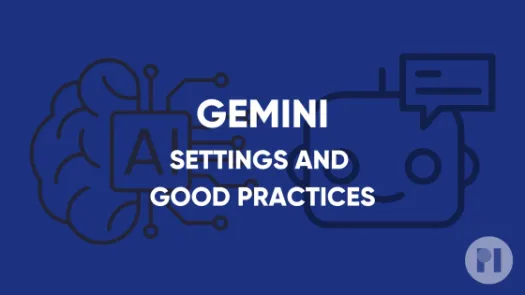Claude: Settings and good practices
This guide covers settings you can tweak on Claude to have greater control over your data.
AI chatbots are used by people in a variety of ways, including to conduct research, create content and analyses, deliver projects, and engage in conversations. We are concerned these AI tools can pose privacy and security risks when offered by tech firms, as they give these companies greater access to your data and access to our personal and professional lives.
This guide includes steps to limit the risks of using this tool such as:
- Managing if and how your chats are shared
- Reviewing third party apps that Claude can access
- Preventing use of your data to train the model
- Deleting chats
Managing if and how your chats are shared
Claude allows you to share conversations via a URL. While in theory only people with the link can read the conversation, it’s not impossible for this link to end up online and be indexed by search engines. Before sharing a link to a conversation, you should ensure it does not contain personal or sensitive information that you don’t want to share.
Note: while you can view shared chats on mobile, you can only delete them from the browser.
To manage your previously shared chats: go to the settings by clicking on your profile in the bottom left corner and clicking Settings. Navigate to Privacy and click Manage next to Shared links. click the unshare button for any chat you don’t want to be public anymore.
Review third party apps that Claude can access
Claude Pro users can access documents, calendar events and other information from other services such as Github through connectors. We have expressed concerns about the privacy and security risks created by connecting AI chatbots to other apps as it can be exploited to access personal data.
To limit these risks, you should regularly review which connectors are enabled and disconnect services you don’t or no longer wish to use.
Note that this feature is only available in the browser and not in the desktop app nor on mobile
Go to the settings by clicking on your profile in the bottom left corner and clicking Settings. Navigate to Connector and review the apps you are connected to.
Once this is done, go through the settings of the app you had previously connected and remove Claude from the third party apps with access (for example for Google, follow these instructions).
Prevent use of your data to train the model
Large Language Models are trained on massive datasets. We have expressed concerns about the lawfulness of using data collected online for this purpose and there are demonstrable risks of this data being reproduced by AI chatbots without user consent or knowledge (called “regurgitation”). To limit the risk of personal data leaking out, we suggest preventing the content of your chats from being used for further training.
On the mobile app:
Go to your profile by clicking the menu in the top left corner and tapping on your profile in the bottom left corner. Navigate to Privacy and turn off the You can help improve Claude setting. Then click Not now to confirm.
Delete chats
Chats, like emails or messages, might contain sensitive information you don’t want others to access. To limit the risks in case of unauthorised access by someone with access to your device or a malicious actor, it can be good practice to delete chats you won’t come back to.
On the mobile app:
Tap on a chat and click the three dots in the top right corner. Tap delete.
On your browser:
Click the three dots next to a chat in the left-hand bar and click delete.
In the browser you can also delete all your chats. Start by clicking on Chats and then clicking select at the top of your list of chats. Tick the top box to select all chats and click the delete icon.
Found a mistake? An outdated screenshot? Think this could be improved? Check out our Github repository and contribute to help keep these guides up-to-date and useful!







